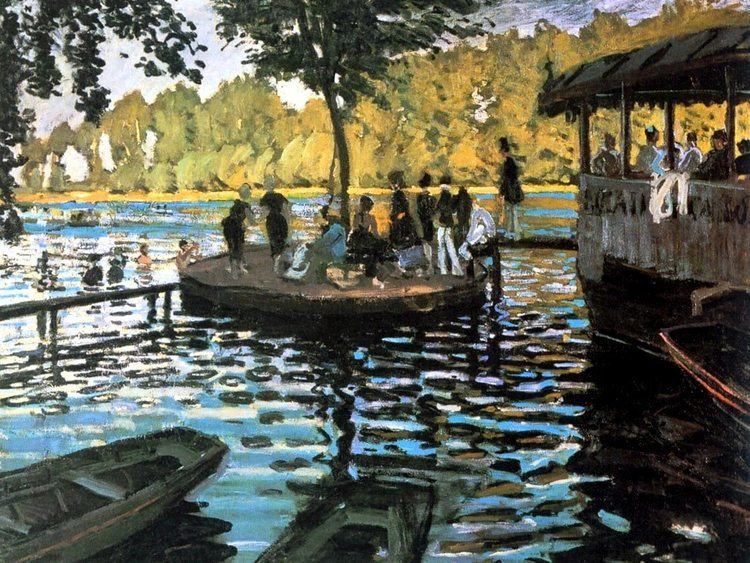Artist Claude Monet Period Impressionism Media Oil paint | Dimensions 75 cm x 99.7 cm Created 1869–1869 | |
 | ||
Locations New York (since 1897), Metropolitan Museum of Art Similar Claude Monet artwork, Artwork at Metropolitan Museum of Art, Impressionist artwork | ||
Montage vid o kizoa etapes de copie de bain la grenouill re de claude monet
Monet wrote on September 25, 1869 in a letter to Frédéric Bazille, "I do have a dream, a painting (tableau), the baths of La Grenouillère, for which I have made some bad sketches (pochades), but it is only a dream. Pierre-Auguste Renoir, who has just spent two months here, also wants to do this painting." Monet and Renoir, both desperately poor, were quite close at the time.
Contents
- Montage vid o kizoa etapes de copie de bain la grenouill re de claude monet
- Bain la grenouill re story
- References
The painting here and one in the London National Gallery (Bathers at La Grenouillere, oil on canvas, 73 x 92 cm) are probably the sketches mentioned by Monet in his letter. A bigger size painting, now lost but formerly in the Arnhold collection in Berlin, may well have been the "tableau" that he dreamed of. The broad, constructive brushstrokes here are clearly those of a sketch. For his exhibition pictures Monet usually sought a more delicate and carefully calibrated surface at this time. An almost identical composition of the same subject by Renoir is in the Nationalmuseum, Stockholm. The two friends were undoubtedly working side by side.
La Grenouillère was a popular middle-class resort consisting of a spa, a boating establishment and a floating café. Optimistically promoted as "Trouville-sur-Seine", it was located on the Seine near Bougival, easily accessible by train from Paris and had just been favoured with a visit by Emperor Napoleon III with his wife and son. Monet and Renoir both recognized in La Grenouillère an ideal subject for the images of leisure they hoped to sell.
As in his earlier picture of the Garden at Sainte-Adresse, Monet concentrated on repetitive elements – the ripples on the water, the foliage, the boats, the human figures – to weave a fabric of brushstrokes which, although emphatically brushstrokes, retain a strong descriptive quality.
The painting is now in the New York Metropolitan Museum of Art. It was bequeathed by Mrs. H. O. Havemeyer in 1929.
